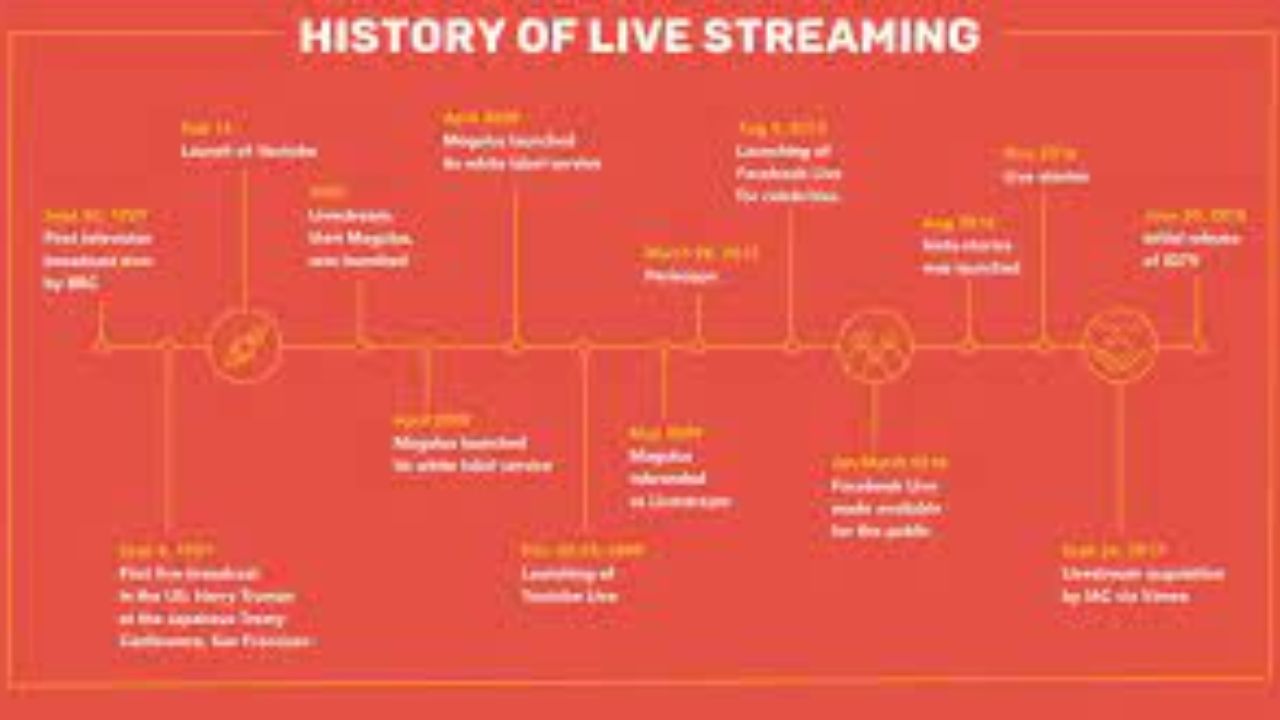Live Streaming: Description, History, Advantages, Works & An Overview
Live Streaming means streaming the content of the media simultaneously which is recorded and broadcast in real-time over the internet.

Introduction of Live Streaming: Live Streaming is used by social media influencers, news channels, actors, and actresses to engage their audiences. It is only considered streaming. Non-live media includes YouTube videos and reels on Instagram and Facebook which are streamed anytime with special features of 2X and quality but are not live streamed.
History of Live Streaming
The internet company which is a real network and the first in the world introduced streaming. Streaming was applied in the early 1990s as a better description for content and video on demand after some time it converted into live video streaming.
They hosted the public live stream to engage and emote the audience. The first broadcast and live streaming was a broadcast of a baseball game between the New York Yankees and the Seattle Mariner.
Advantages of live streaming
After the COVID-19 pandemic, the world became more virtual, and virtual meetings have become a daily use. Working from home, digital marketing, and freelancing for the whole world, all these things take pace. Then, virtual meetings and live streaming are growing exponentially.
Read Also~Central Government: Definition, Structure, Roles and Responsibilities GOI
Web Conferencing in live streaming is similar to face-to-face interaction and availability of audio and video features. There are features like sharing and whiteboarding for explaining concepts beautifully. These include brainstorming sessions.
Live Streaming in the Business World
Live streaming is becoming more and more popular in the professional world after COVID-19 as it helps businesses and organizations to connect perfectly with their audience on a deeper level despite the barrier of physical location.
- Location-friendly: – Persons can work and join virtual meetings worldwide. People can attend and host meetings from anywhere.
- Cost-effective: It only requires a laptop, mobile phone, and internet connection; this saves the cost of infrastructure, food, and tea for the company.
- Comfort: employees can join the meetings from the comfort of home without getting stuck in traffic and traveling. It has resolved many issues such as office closures, scheduling conflicts, and business disruption.
- Collaboration: These meetings empower the better collaboration of teammates. It increases the diversity, equity, and belongingness of people.
Read Also~Protest Movements – An Overview, History and their Impacts
Tools for Live Streaming
Live Streaming tools are PCs, laptops, mobile phones, cameras, and internet connections. These meetings are flexible and capable of accommodating members who can apply via phone.
Things should be kept in mind while streaming
The host should make some essential and compulsory rules for increasing efficiency in virtual meetings
- Advise members to minimize distractions, like a peaceful environment while meeting.
- Webcam: – members should use a webcam for meetings. It helps in increasing confidence, belongingness, and connection.
- Speaking etiquette: – There should be one speaker at a time and not overlap the voice.
- There should be a schedule of meetings and the purpose of meetings. The meetings should be planned and well prepared for better explanation.
- It helps increase efficiency and does not hesitate to return on track.
- The host can make meetings interesting by asking questions and answering sessions
Read Also~Business Sector: History & Everything You Need to Know
